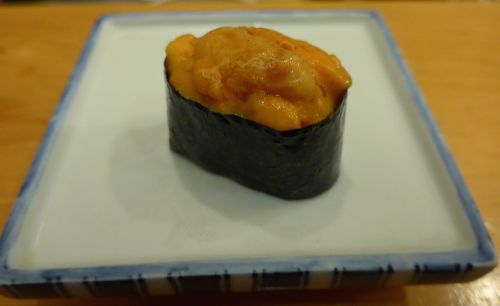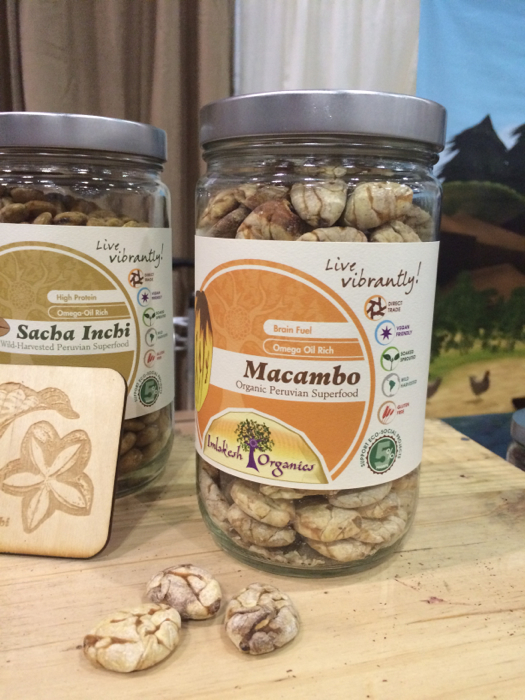Edible innovation: our craving for the new
We are curious about new things, food included. Whether the Internet’s information genius is the culprit, now more than ever we, and particularly the millennials, are open to checking out for our culture uncommon foods. In most Westernised countries, eating insects, rare seeds, in the wild-foraged plants and fungi, has been sceptically frowned upon. Today’s adventurous chefs, in particular the influential TV celebrity breed, opened our spheres of edibles. From Noma in Copenhagen to Quintonil in Mexico, the menus offerings feed our curious souls.
From combat to our tables
Like canned and processed foods were once frowned upon as something only soldiers in the dire circumstances of combat would have to gorge for the sake of their survival, they became mass-produced and consumed by civilian populations worldwide. Their increased familiarity was probably helped by skilful marketing but also by war veterans who were not afraid to open the tin and spoon the highly imperishable edibles out. Paving the highway for ready-made dinners that now jam our supermarkets.
Closer to my house experience, my landlocked family would once look at shrimps as unpalatable sea “monsters” eaten only by strange people. Yet, with accelerated globalisation and accessibility of “exotic” food items in the new millennium our newness scare was flipped so my family now orders these ‘monsters’ (ideally unshelled and mixed in a stri-fry so they do not see their tails) when travelling. My first shrimp was opened during a family dinner in Paris, where everyone empathised with a seafood virgin from the Czech Republic, very helpful, indeed!


Our wanderlust for the unknown is contagious and that is perhaps why the neophobia of the past generations seems to be slowly outgrown by openness. Seeing more people around you trying new things can reduce the fear of surfing on the new wave. With the constant flood of new waves in the forms of flavours, origins and alterations we also occasionally re-try the foods we were not so keen of. I love uni (sea urchin), once I tried a perfect fresh one in Japan I was hooked, but also I hate water kefir and prefer cultured milk. Yet, each time someone with good taste tells me that this water kefir tastes like no others, I try. Then again, my face turns sour and I can’t take another sip, but I keep trying.
Where the new comes from: laboratory versus nature
It might still sound as an extreme but the well-regarded French food scientist Hervé This is now making lab food in colourful presentations that may sound like eating tubes of paint. Some of the world’s top chefs like Pierre Gagnaire already serve these anomalies in their high-heeled restaurants and if they are approving it and show how to use them to create tasty meals, the public might soon enjoy the novelty of This’s “note-by-note cooking”. Growing global population, the climate changing, droughts, floods and other challenges to agriculture might make This’s futuristic lab food a necessity, not a choice. To magnify his importance, Hervé This was one of the seeds of molecular cooking that took over the world’s best restaurants in the past decades.
The fans of the natural food movement though cannot stop hiccups when such chemical approach is mentioned. Our planet is abundant with plants, in one climate zone an avocado grows perfectly while in other you will see wild garlic thrive. Although not as profitable as processed foods, exotic fruits and vegetables tempt us with their naturally-shaped perfection as well as their oddness. Always on the road, recently I flew to Colombia and as every time I visit a new place, my jaw was dropping when exposed to the local diversity. My taste buds were burnt by trying some of those spoils of my own curiosity, nevertheless, my lips shivered with anticipation before each first bite. The new is exciting and trying local foods when travelling is essential for an authentic experience. The more we travel, the more accustomed we become to new flavours.

Fast lifestyles: feeding the age of abundance
Food manufacturers have exploited this trend for novelty commercially. Producing nutritional concentrates wielding extraterrestrial powers aka “superfoods” is a huge business in the developed world where food in not scarce. Each year new superfoods appear on our grocery stores’ shelves. Some stay, but many return back to where they came from. Our adventurous appetites now seem to shift like tectonic plates in California. New phone with each release feeds our minds with another craving – change in other realms of our lives such as food.
From San Diego, through Hollywood to San Francisco, people live well. Living well, next to other lifestyle criterions, means eating top quality food. The later is a subject to highly individual interpretation. Are the shiny, perfectly shaped apples sprayed with pesticides – or the almost tasteless organic berries produced on a large commercial farm – or the lush and juicy simply grilled steak from a local rancher the best quality foods? For me it is neither, since my grandmother grows and rises top quality produce and animals. Not only they are incredibly delicious, but I know that my family cares tremendously about what we put into our bellies.
Constantly fooled by marketing
On the labels, what sounds best for us today, does not need to feel so tomorrow. Nutrition research is responsible for perhaps the most unstable scince-based results. The marketers know this very well and will always use it to their, not your advantage. Keep this in mind when charmed by the new product that makes you feel like ‘Omg, why I have been eating, drinking the junk until now?’ Labelled “heart-friendly”, “preventing heart disease”, and other curative add-ons, will surely cost you more. You might be fooled for the rest of your life, since the “upgrades” will surely happen with the speed of a conveyor belt automatically filling and packaging the new goods.
Like the word teen-ager came to existence at the beginning of the past century, hyphenated at first, in the new millennium superfood entered the English dictionaries together with dozens of technology related terms. The point is not to define what it is, but how perfectly flexed marketing muscle it has.
Nowhere else are so far these superhuman feeding edibles more consumed than in California, the mecca of health obsessed population. Since the Golden State is in our time synonymous with innovation, it is naturally hungry for the new. Like tech gadgets “upgraded” and “better” beverages, ingredients and cuisines are being introduced constantly to the consumers that get bored by the same stuff.
Change is good for business. With new product, customers’ curiosity is stirred, repackaged into a better vision of the same old thing. Every time I come to the US my brain gets overstimulated when strolling through the endless lines of local grocery stores. Even the old school delis in New York, do not offer just the traditional tried stuff, but their shelves are hyped up with hemp seed snacks, kale chips, sushi rolls, and otherworldly sounding flavours of iced tea. One has to search thoroughly to find the basic pretzels or plain yogurt.


The new news: what we will be eating next
Where the next açai comes from? Brazil provided plenty of superfoods as did Peru, Japan and China. For a globetrotter like myself, it is puzzling to see the domino effect of food around the developed world. Kale is served in trendy cafés in Paris, quinoa from South America is now plated in Hong Kong and sacha inchi nuts are now flooding Los Angeles instead of the locally grown almonds, peanuts and pistachios. My recent find at a health store in LA were “magical” pili nuts from Philippines. On the label, the marketing miracle read: “Our nuts are still hand-shucked one by one in a traditional way using a machete.” How exotic! “Paleo” perfect. Adding the halos of contemporary popular diets emphasising the “vegan, paleo and gluten free” innocence of these “meat- and grains-free” nuts is like telling a child that a steamed broccoli is a vegetable, not a dessert .
As the quinoa fad wears off, black and red rice will probably be soon all over the place, from your crackers to the restaurant plates. There are now purely rice-dedicated eateries, sweet or savoury, you pick. The future of protein consumption is forecast to introduce to the Western palates a more sustainable delicacies such as ants, grasshoppers and other insects. D.O.M. in Sao Paulo, might have been voted as the best restaurant in South America, while outraging some with its serving of fried ants over a slice grilled pineapple.
In Mexico eating insects had been already a pre-colonial staple and with its cuisine being currently in the spotlight of the world’s most influential chefs, I bet you will see more than the crunchy larvae in a bowl of guacamole. Finding an apple with a worm inside on the market may turn into a welcome, protein-rich addition to your crisp piece of fruit. “Escamoles” (ant eggs) are served at Mexico City’s leading Quintonil restaurant, and we were welcomed with a shot of tequila, salt and fried chilli grasshoppers at a five-star hotel in San Miguel de Allende. Do not hesitate and bite.

Emerging counterpoints: recycled lives
My recent visit of LA’s Green Festival staged not at an edgy street, but inside the city’s Convention Centre, confirmed the ramping importance of ecological products and the trend towards recycling, the anti-new movement. Nevertheless, with many exotic ingredients featured on the fair, I realised that sustainability is still not taken seriously enough. Why shipping rice from Philippines and nuts from the Amazon, when comparable raw ingredients grow within a short radius of your own country?
Locavorism is not a fad, but a return to how we have fed ourselves side humanity’s conception. Personally, I join the ranks of distinguished food and nutrition experts in their plight for more attention being brought to sustainability and food safety. Sustainability and thus consuming more local seasonal produce is more important and healthier than seeking the most remote tropical or Himalayan ingredient when so much of the stuff we need grows around us.
The local food movement as a contradictory force to the exotic foreign superfood mania has gained a momentum. In France and Italy it has always defined regional cooking, but in California the chef Alice Waters in the 1960s spurred the seasonal local sourcing phenomena. In recent decade it stretched beyond her sphere of influence around the San Francisco Bay area.
In Amsterdam, Netherlands Instock, go even further in their efforts to reduce food waste by local suppliers. The skilled chefs at their restaurant, take-away and a mobile food truck, use ingredients, that would otherwise go wasted. Their waste-to-table approach is groundbreaking in that their electric vehicle collects every morning unsold but still great produce at a local supermarket chain, a meat packaging company and left cuts from a large fish supplier. Damaged packaging, surplus stocking, too short expiration date, are the main reasons of waste from the producers and distributors of food. For food safety, they never use products past their expiration date and when needed use a small proportion of freshly bought ingredients such as olive oil, butter and seasoning for cooking. The main challenge – a brilliant management and organizational skills!
Like a green shoot spiking up through the soil each spring, bursting with newness and seeking change, while exerting energy accumulated from the seed’s dormant winter rest, we are defined and belong to the prerequisite cycle of nature. The new becomes old and the only sustainable way to keep it going is to rejuvenate the energy for another go. With age we may become wiser and find pleasure in restoring the past, instead of the ceaseless hunt for the next new thing that after all once gets old.

